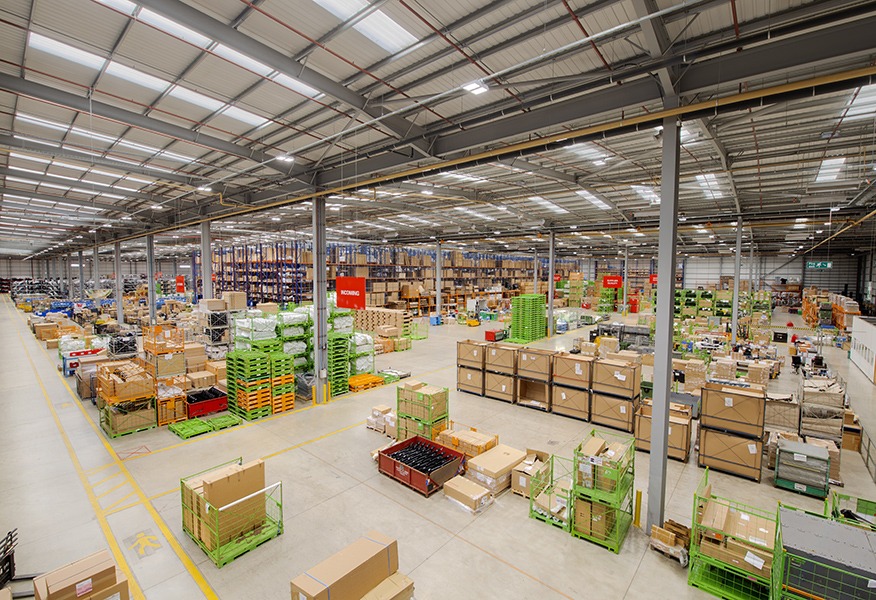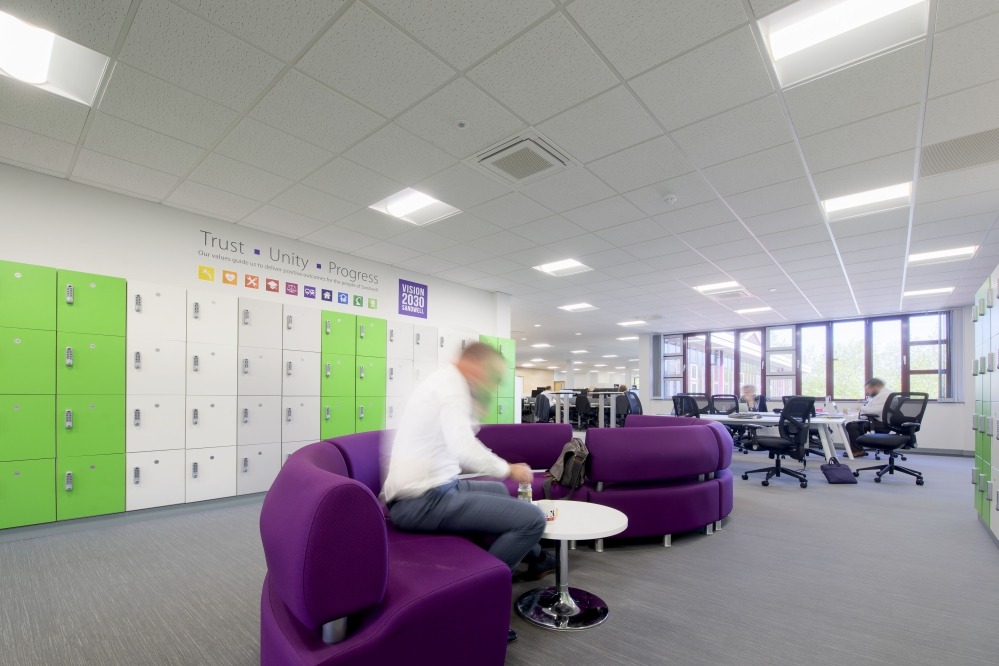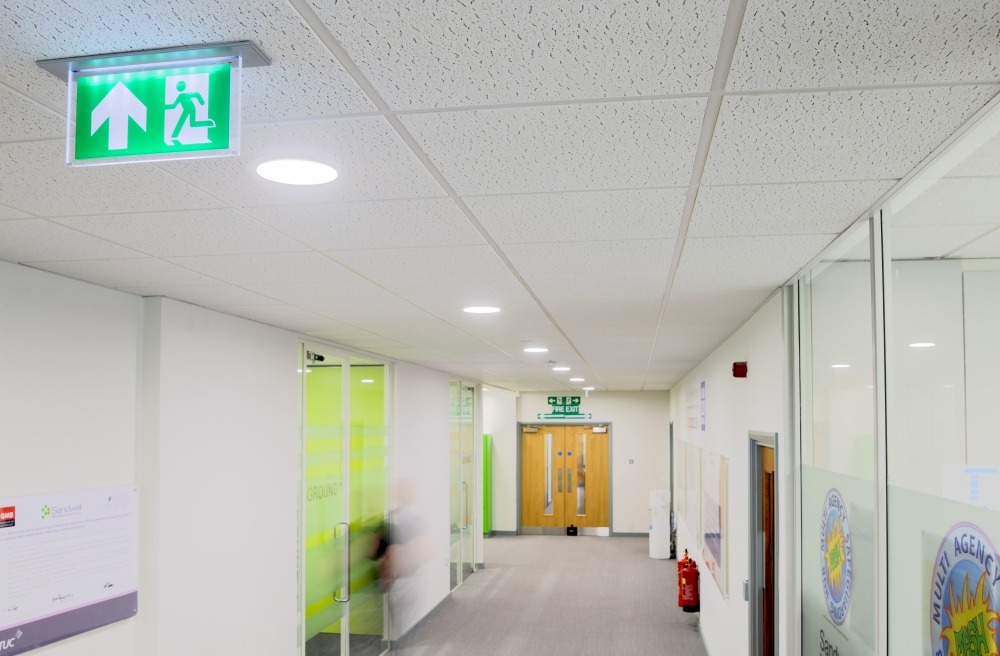
Taking the lead to boost Wellbeing and Sustainability
As concerns about climate change and employee wellbeing continue to grow, there is an onus on prominent companies in all sectors of the built environment to illuminate the way to a more sustainable future, says Tamlite Lighting Managing Director John Allden.
The notion of corporate social responsibility (CSR) – by which a company aims to act in a way that contributes positively to a host of broad societal goals – has been assuming ever-greater importance since it was first used in the 1960s. But it is arguably only in the last 10 to 15 years that the built environment as a whole has begun to take a more joined-up approach to the implementation of Wellbeing and Sustainability policies that have benefits within and without the scope of individual businesses.
This trend has gone hand-in-hand with the realisation that leading manufacturers in each sector have a responsibility to show good practice – and be seen to show it, too. Most importantly, companies who have this kind of leadership role have the power to show other industry players that not only is working in a more efficient way good for the environment and their employees, it is also great news for business.
As a prominent lighting manufacturer for more than 50 years, at Tamlite we are conscious of our broader duties to the industrial lighting sector. With the advent of improved fluorescent lighting fixtures and, latterly, highly energy efficient LED lighting systems, our awareness of the need to manufacture luminaires in a responsible way has continued to grow. Today, in 2019, we believe that these responsibilities fall into three principal areas: sustainability; wellbeing; and emergency lighting and other issues related to safety.
These areas are, by their very nature, moving targets, especially in the context of present fears about the accelerating rate of climate change, for example. The good news for electrical contractors is that by talking about these three important issues and working with manufacturers who have them at the core of their own business strategy there are opportunities for their business to grow too. As a consequence, end-users will not only benefit from reduced energy consumption and a better working environment, but they can also highlight their efforts in these areas and enhance their own public perception as organisations that take their social and environmental responsibilities seriously. It’s a win-win for the entire supply chain.
Serious about sustainability
Now more than ever, our conversations with potential customers invariably address the issue of wellbeing and sustainability and the impact that a new installation – from commissioning through its entire lifecycle – is going to have on the environment. And it’s easy to see from looking at some of the massive body of research in this area that this is entirely right and proper.
For example, recent findings by global design and architecture firm Gensler highlighted the dramatic impact of the built environment sector on the climate, with existing buildings and new construction projects accounting for 40% of man-made greenhouse gas emissions and 50% of energy use globally. If this does not sufficiently underline the need for sustainable developments, then consider the fact that the population is set to rise to 10 billion by 2050 at the same time as an ever-greater percentage of people opt to live in cities. Developing and maintaining efficient buildings is going to be fundamental to meeting the many challenges of wellbeing and sustainability that lie ahead.

With the latest LED lighting systems, it is possible to achieve reductions in energy consumption of up to 60% compared to legacy technologies, increasing by a further 30% if the new system encompasses lighting controls.
Wireless lighting networks offer substantial benefits for building managers in terms of monitoring their energy output, lighting designers who wish to connect an entire building without the restriction of physical wiring, and contractors who can offer smart lighting solutions to their customers without additional complexity to the installation. In addition, wireless networks facilitate the connection of an entire estate without the need for copper, rubber or plastic, reducing the dependency on precious earthly elements.
The need for replacements with LED lighting is also greatly reduced, with lifecycles of c 50,000 hours contributing to the undeniable impression that LED is – by its very nature – a sustainability-conducive technology.
But as an advocate for the circular economy in construction – whereby everything is engineered to be constantly reused or recycled – we are also focused on what happens to lighting when it does reach the end of its operational life. To this end Tamlite working in partnership with its sister company the Electrical Waste Recycling Group (EWRG), have worked on a series of major projects over the last few years, including our refit of ASDA stores across the UK.
The collaboration has been productive because of our commitment to using sustainable materials that allow luminaires to be successfully recycled. Hence, the EWRG comes on-site to remove the previous luminaires, cabling and electrical components, and then ensures that they are recycled or used for parts. It’s a big part of our commitment to the circular economy and it’s an approach that we expect to be applied even more extensively to our roster of projects in the future.

Waking up to wellbeing
Ultimately, a lot of this emerging corporate methodology comes down to long-term planning. The other most important facet of this is choosing building systems that are conducive to employee wellbeing.
With more and more of us expected to work into our late ‘60s or beyond, the need to maintain a strong and healthy workforce speaks for itself. At the same time, the data about working days being lost to illness hasn’t exactly been encouraging over the last few years. For instance, the HSE reports that 30.7 million working days were lost due to work-related ill-health and non-fatal workplace injuries in 2017/18. The vast majority of these lost days were down to stress, depression, anxiety and musculoskeletal disorders.
Fortunately, lighting is one specific area in which building managers and electrical contractors can make a real difference to employee wellbeing. Multiple studies have shown lighting that is too bright and/or dazzling, as well as inconsistent across different areas of a building, can lead to increased incidences of headaches and dizziness. The unsympathetic placement of lighting has also been linked with the creation of stressful working environments.
Lighting designs that comply with industry standards such as BS EN 12464 go some way to delivering improvements in terms of occupant wellbeing. And with the latest tunable systems, it is even possible to arrive at an installation that perfectly complements human circadian rhythms. In conjunction with control infrastructures, companies can benefit from lighting systems whose output and nature changes as the day progresses. Such systems can also be easily adjusted to take account of employee feedback.
As a leading provider of LED-based systems for the best part of 20 years, this area of wellbeing and sustainability in which Tamlite has consistently demonstrated its leadership credentials.
Emergency lighting essentials
Ease of ensuring that lighting meets legal safety requirements is another reason for contractors to partner with leading manufacturers. In many cases they will be best-placed to advise on the specification of emergency lighting, which is a legal obligation under the Regulatory Reform Order (Fire Safety) 2005 and should be installed and tested in line with BS 5266:1 2016. Among other legislative measures, this means that in the event of a mains failure, the emergency lighting system will continue to provide adequate lighting levels and directional indication to allow the occupant to move safely around the building, and exit if necessary, without accident or injury.
As with several other sectors in the building technologies industry, lighting has been the subject of considerable change in recent years, with some newer suppliers emerging and others consolidating into larger operations. In this context a company like Tamlite – which has ridden out so many market shifts over its five decades – can offer the reassurance of a consistent approach. But our long tenure also means we have been able to develop coordinated strategies around all of the topics that define the wellbeing and sustainability agenda.

Partnering with us is the easiest route for contractors to guarantee that they achieve projects that are supportive of efficiency and employee health. And for the end customer benefiting from this approach, the reflected glory of success is likely to be significant and long-lasting.
This has been featured in the November lighting edition of Electrical Contracting News.